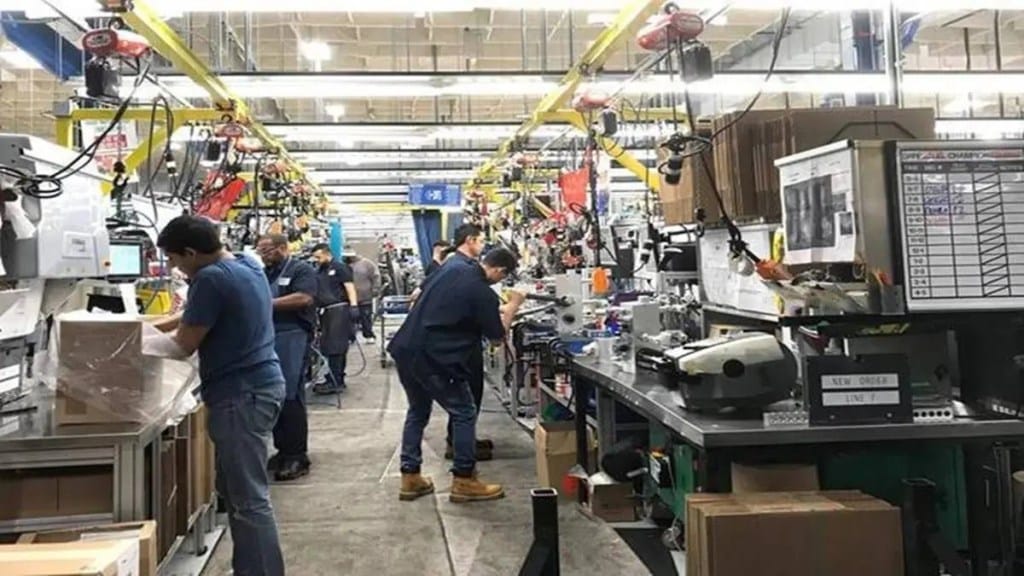The government is considering reopening the windows for many of the production-linked incentive (PLI) schemes, primarily to let large global firms in.
The move follows the realisation that the reason these global companies, including those in the tech space and high-end manufacturing, haven’t joined the scheme is the mismatch between the short periods for which the schemes were made available and the time taken for corporate decisions.
The government, according to official sources, believes investor interest in PLI is intact, but the difficulty in complying with the process is a discouraging factor.
The complex guidelines on eligibility and procedures for claiming incentives may be reviewed, the sources said.
“Big players in most of the PLI schemes have not (joined the scheme) as we closed entry too early. Those who have come are mostly second-rate companies that are unable to create the manufacturing ecosystem,” a senior official told FE, on condition of anonymity.
Without such ecosystem, as Apple has brought to the country, India can’t be a key player in the global supply chain, which is the objective of the PLIs, the official noted.
The PLIs which could be reopened include advanced chemistry cell (ACC) battery storage, auto and auto components and specialty steel, among others, the sources indicated.
The PLI applicants could utilise just Rs 2,900 crore incentives in more than a year after the start of release of the sops, or just 1.5% of the budgetary outlay of Rs 1.97 trillion for five years.
In the past one-and-half years after PLIs were rolled out, 588 applications have been approved in 14 Sectors with an expected investment of `2.7 trillion. But the actual investment stood at just Rs 62,000 crore till March 2023. If the manufacturing facility is set up within two years, these companies would receive incentives for five years on their sales.
The time window for firms to show interest in PLI schemes was less than three months. For example, the ACC scheme was opened on October 22, 2021, and closed on January 14, 2022. Three firms – Reliance New Energy Solar, Ola Electric Mobility and Rajesh Exports – were selected for ACC PLI in March 2022. Yet, virtually no investments have been made so far by these firms against their commitment of Rs 27,000 crore. Sources said some of these players did not rope in technology partners before bidding.
The top global lithium-ion battery market players, including A123 Systems LLC, Envision AESC Limited, LG Chem, Panasonic Corporation, Samsung SDI and Toshiba Corporation have given a go-by to the ACC PLI.
Similarly, in automobiles & auto components PLI, 85 players, including some foreign players, were selected and committed to invest Rs 67,690 crore, of which just 9% has been achieved more than a year since the firms were selected.
Tesla, one of the world’s top manufacturers, is neither in battery nor automobile manufacturing PLI. It produces hundreds of thousands of cars, millions of batteries and billions of lithium-ion cells annually. It is currently in talks with the government about its entry into India, possibly next year.
Once Tesla agrees to set up a manufacturing plant in the country along with a timeline for meeting indigenisation levels, the government may come out with a modified PLI scheme for electric vehicles and ACC to invite fresh investments by companies which did not participate earlier.
Speciality steel has not seen any investments so far against Rs 42,500 crore expected from 30 companies, including Tata Steel, JSW Steel, JSPL and SAIL. Even though the PLI was announced for steel in July 2021, the process started only in March 2023 with the signing of the agreements with the selected firms. Now, the government is thinking of bringing PLI 2.0 for specialty steel.
Modifying or coming out with a PLI 2.0 will not be new, as it has earlier been done for telecom products and IT Hardware PLI schemes.
Another issue hurting PLI schemes is the cumbersome procedure to claim incentives. For example, in auto and telecom equipment PLIs, the products will have to go through testing against mandatory benchmarks by the administrative departments, which are ill-equipped to handle these issues, officials note.

